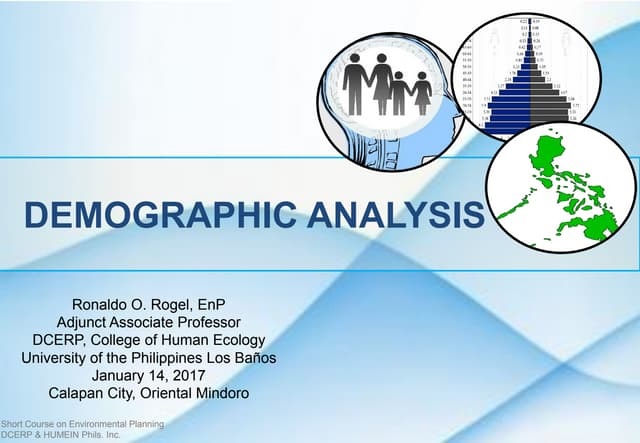Introduction
Demographic analysis is a critical tool in urban and regional planning, providing a comprehensive understanding of population dynamics and trends. It involves studying various aspects of populations, such as size, structure, distribution, and changes over time. This analysis is essential for informed decision-making in planning and developing sustainable, efficient, and equitable urban environments. Recent advancements in data collection and analysis have further enhanced the accuracy and relevance of demographic studies, making them even more crucial for effective planning.

Key Components of Demographic Analysis
- Population Size and Growth
- Total Population: Knowing the total number of people in an area is fundamental for resource allocation, infrastructure development, and service provision.
- Population Growth Rate: Understanding whether the population is increasing or decreasing helps anticipate future needs and challenges, such as housing demand and public service requirements.
2. Age Structure - Age Distribution: The age composition of a population influences the types of services required, such as schools for younger populations and healthcare facilities for older populations.
- Dependency Ratios: The ratio of dependent age groups (young and elderly) to the working-age population impacts economic productivity and the need for social support systems.
- 3. Migration Patterns
- Internal Migration: Movement within a country affects urbanization, regional development, and the distribution of resources and services.
- International Migration: Cross-border migration introduces cultural diversity, affects labor markets, and presents challenges in social integration and service provision.
- 4. Fertility and Mortality Rates
- Fertility Rate: The average number of children born to women of childbearing age affects population growth and age structure.
- Mortality Rate: The frequency of deaths in a population influences population size and life expectancy trends.
- 5. Urbanization Trends
- Rural-to-Urban Migration: The shift from rural to urban living necessitates the development of urban infrastructure and services to accommodate growing urban populations.
- Urban Sprawl: The expansion of urban areas into surrounding regions impacts land use, transportation, and environmental sustainability.
Implications for Planning
- Infrastructure and Housing
- Population Growth: Rapid population growth in urban areas requires the expansion of infrastructure such as roads, public transportation, water supply, and sanitation systems.
- Housing Demand: Planners must ensure an adequate supply of affordable housing to prevent overcrowding and the growth of informal settlements.
- 2. Healthcare Services
- Aging Population: An increasing elderly population requires more healthcare services, long-term care facilities, and age-friendly infrastructure.
- Healthcare Access: Migratory populations and expanding urban centers need well-distributed healthcare facilities to ensure equitable access to medical services.
- 3. Education
- Young Populations: Regions with high birth rates and young populations need more educational institutions, teachers, and educational resources.
- Adult Education: Migration and changing job markets necessitate ongoing education and training programs for adults to adapt to new economic realities.
- 4. Economic Development
- Labor Market Dynamics: Demographic trends influence the size and characteristics of the labor force, affecting economic productivity and growth.
- Economic Diversification: Planners must anticipate changes in the workforce and support economic activities that align with demographic realities.
- 5. Social Services and Welfare
- Dependency Ratios: High dependency ratios require robust social safety nets and support systems for children, the elderly, and other dependent groups.
- Community Services: Planners must develop community centers, recreational facilities, and other services that cater to diverse demographic groups.
- 6. Environmental Sustainability
- Urban Sprawl: Managing urban expansion is critical to prevent environmental degradation, preserve green spaces, and ensure sustainable land use.
- Resource Management: Population growth and migration patterns impact resource consumption and necessitate efficient management of natural resources.
Recent Trends and Innovations
- Big Data and Analytics
- Real-Time Data: The use of big data and advanced analytics enables planners to monitor demographic changes in real-time and make data-driven decisions.
- Predictive Modeling: Predictive models help forecast future demographic trends and their potential impacts on urban and regional planning.
- Geospatial Technologies
- GIS Mapping: Geographic Information Systems (GIS) provide detailed spatial analysis of demographic data, aiding in efficient resource allocation and infrastructure development.
- Remote Sensing: Satellite imagery and remote sensing technologies offer valuable insights into population distribution and land use changes.
- 2. Smart Cities Initiatives
- Integrated Planning: Smart cities leverage technology to integrate demographic data with urban planning processes, enhancing efficiency and responsiveness.
- Citizen Engagement: Digital platforms facilitate citizen participation in planning, ensuring that demographic needs and preferences are considered.
- 3. Inclusive Planning
- Equity-Focused Strategies: Planners are increasingly adopting inclusive strategies to address the needs of marginalized and vulnerable populations.
- Community-Based Approaches: Engaging local communities in planning processes ensures that demographic diversity is reflected in development plans.
Conclusion
Demographic analysis is a cornerstone of effective urban and regional planning. By understanding population size, age structure, migration patterns, fertility, mortality rates, and urbanization trends, planners can address current challenges and anticipate future needs. Recent advancements in data analytics, geospatial technologies, smart city initiatives, and inclusive planning approaches enhance the ability to respond to demographic changes. Incorporating these insights into planning processes helps create sustainable, equitable, and resilient communities that meet the diverse needs of their populations.



